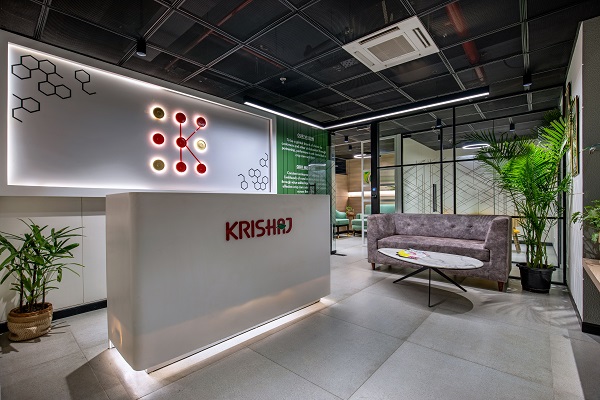“Embark on a journey through architectural innovation with Resaiki Interiors and Architecture Design Studio, where sustainability, functionality, and occupant well-being converge. Discover our commitment to eco-friendly design strategies, innovative space optimization solutions, and the transformative power of biophilic design. Explore how color palettes influence ambiance, and learn about the integration of AI and IoT technologies in creating smart, efficient living environments.”
What eco-friendly design strategies or materials do you incorporate to ensure sustainability in your architectural projects?
We incorporate sustainable materials and facets into our designs, prioritising environmental responsibility from the concept stage to material selection. In the office space we did for Krishi Resayan, we carefully selected materials with low environmental impact for construction and interior finishes. Additionally, we implemented energy-efficient lighting systems and HVAC solutions to minimise energy consumption. We also make use of innovative materials like timber concrete, precast concrete, and cork, which are eco-friendly materials known for their durability and low environmental impact. Additionally, we integrate solar panels into our designs to harness renewable energy and reduce reliance on non-renewable sources. We recommend our clients to avoid including independent swimming pools. This not only helps conserve water but also reduces maintenance costs and energy consumption associated with pool operation. These strategies, combined with our careful selection of materials and focus on energy-efficient systems, allow us to create buildings that are not only aesthetically pleasing but also environmentally responsible.

What innovative design solutions do you employ to optimize space and functionality in compact living environments?
We optimize space and functionality in compact living environments through innovative spatial planning and design, leveraging advanced design solutions and new-age technologies. For example, in our office project for Krishi Resayan, we utilised modular furniture and flexible spatial configurations to maximise functionality within the limited square footage. Additionally, by incorporating multi-functional design elements such as rotating louvers and interactive meeting rooms, we created a dynamic and adaptable workspace that meets the diverse needs of the employees. We also recognize the increasing popularity of flexible furniture in compact living environments. These solutions allow for efficient use of space, providing residents with the flexibility to transform their living areas based on their current needs, whether it’s sleeping, working, or entertaining.
In what ways does basophilic design enhance the overall ambiance and well-being of occupants in architectural spaces?
Basophilic design enhances the overall ambience and well-being of occupants by fostering a connection with nature by integrating natural elements like potted plants and greenery. In the Krishi Rasayan project, we applied basophilic design principles to enhance the overall ambience and well-being of the occupants. By strategically placing potted plants and greenery throughout the office space, we created a biophilic environment that fosters a connection with nature and promotes employee well-being. This integration of natural elements enhances the space’s aesthetic appeal and contributes to improved air quality and reduced stress levels among the occupants.
How do color palettes influence the ambiance and emotional response within interior spaces?
Colour palettes play a crucial role in shaping the ambiance and eliciting emotional responses within interior spaces, strategically selected based on principles of colour psychology. For example, we incorporated vibrant colours inspired by the Indian landscape to create a sense of warmth and vibrancy within the workspace.
How is AI and IoT transforming the concept of smart homes, and what impact does it have on user convenience and efficiency?
Integrating AI and IoT technologies is transforming the concept of smart homes, enhancing user convenience and efficiency through interconnected devices and intelligent systems. For example, by integrating smart lighting and temperature control systems, we can optimise energy usage and create a comfortable working environment and living spaces. IoT-enabled sensors can provide valuable data on occupancy patterns and space utilisation, allowing for more efficient space management and resource allocation within the office.


